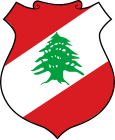 |
|---|
|
|
Lebanon has hundreds of registered political parties. After 2005, when the assassination of former Prime Minister Rafic Hariri precipitated the Cedar Revolution, the political landscape became polarized between two rival alliances, the March 8 Alliance and the March 14 Alliance. Both names refer to dates of mass demonstrations during the revolution.
The March 8 Alliance was supportive of continued Syrian intervention in Lebanon, and includes Hezbollah, the Amal Movement (both majority Shia), and the Free Patriotic Movement (majority Christian). The March 14 Alliance contained parties who advocated for the end of Syrian involvement. Major partners include the Future Movement (majority Sunni), the Lebanese Forces, and Ketaeb (both majority Christian). This alliance dissolved in 2016, and the Future Movement withdrew from the 2022 election, but the remaining partners have maintained their opposition to Hezbollah.
The Progressive Socialist Party, the main representative of the Druze community, has supported both blocs at different points.
After the Revolution of 17 October 2019, a series of large-scale protests against the country's economic situation and political elites, a third bloc has emerged, of non-sectarian groups advocating for wide-scale reform. These groups first gained parliamentary representation in the 2022 elections.